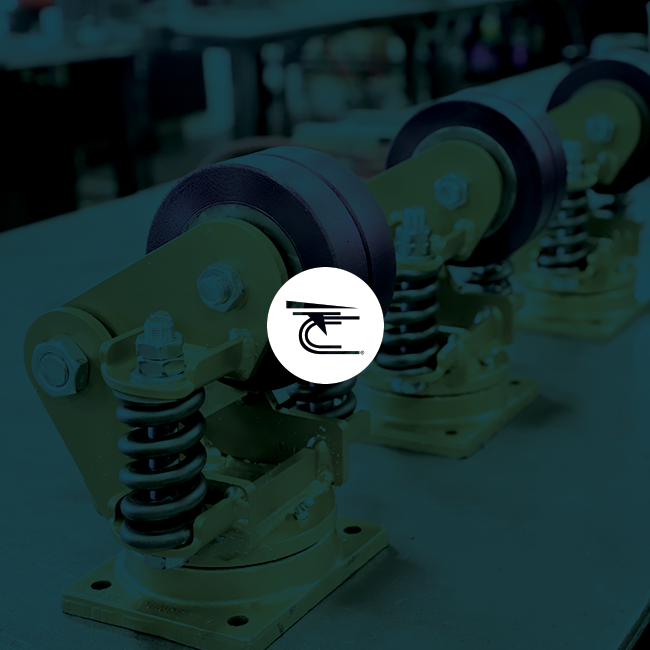

Rail transport has been around since the 1800s, providing a great way to achieve low frictional resistance while moving heavy loads for many production and logistics operations. In today’s material handling world, track systems are still a reliable method for many industrial applications, and V-groove wheels are a perfect choice.
V groove wheels are made from cast iron or nylon, which are designed for high load capacities. The “V” is machined into the face of the wheel at 90 degrees, and a relief groove is placed at the base. This groove assures that the weight is evenly distributed on the track.
The tracks these v-groove wheels roll on is usually an inverted angle iron or round bars. Elevating these tracks offers the added benefit of minimizing wheel problems caused by picking up floor debris. These wheels can also be used on flat surfaces without damaging them. They’re strong and one of the best choices available for heavy loads.
When pairing a caster and a track, you want to make sure that the hardness of one is more than the other. This helps to minimize the wear of one of the two components. Generally, the wheel is the component that takes the brunt of wear, as it is easier and cheaper to change out wheels then tracks.
Using the “Rockwell D” scale – a standard of measurement of hardness – it is suggested that the wheel ideally be approximately five points softer than the track on which it is running, to assure that the wear is minimized on the rail.
If more than one track is used, you want to make them parallel, straight, and level. Otherwise, v-groove wheels may bind or run-up over the track. That being said, if only four wheels will be engaging the track, only one side of the cart should bear grooved wheels, while the other side of the cart is equipped with flat-face wheels. Because in reality, most tracks are not laid in perfect alignment and track widths vary, so this split configuration will ensure that cart can adapt without derailing.
Click here to learn more about the different kinds of wheels used in industrial applications.
These wheels are excellent for:
For more information about the various wheel types used with steel casters, you can check out our downloadable catalog. Or, give us a call at 517-680-7950 and talk to a Caster Concept Representative.